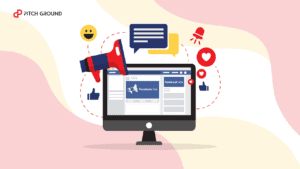According to Workwise, ERP implementations can cost something between $75,000 to $750,000 for small and medium-sized businesses.
Seems like the most expensive software you would buy, right?
The reason is ERP—which stands for Enterprise Resource Planning— is the most complete and holistic type of Business software.
ERP integrates sales, financial, accounting, marketing, inventory, procurement, productivity, and all aspects of a company within a single software.
Its value proposition relies on the fact that all your business data will be centralized so you can increase efficiency.

However, in the practice, such implementations are easier said than done.
- If you think of enterprise leading providers like NetSuite or SAP—which for some businesses costs would surpass millions of Dollars—implementation may take years and a fully dedicated development team.
- You must pay training and onboarding in order to help your employees utilize the software.
- You may pay custom development from a development specialist as no ERP entirely fits companies’ needs.
I’m a SaaS person (such a weird title).
- I see great startups and companies re-inventing robust and hard-to-maintain software into self-service, simplified solutions.
- I would expect great customer support, community support, friendly UX, and documentation to reduce as much as possible over expenses on specialized training.
- Most of the times, cloud-based solutions are better than on-premise solutions
- Adoption takes, in the worst scenarios, a few months.
- I wouldn’t pay relatively excessive fees
I agree on something: I can’t compare an ERP system with an email marketing software: ERPs are much more complex.
Yet, while bureaucracy is the norm in corporations, this should not be the case for smaller businesses that need faster and more affordable deployments.
- So, how can a small company leverage an ERP solution to make the effort worth?
- What specific use cases and benefits do ERP bring to these SMBs?
- And, how much should a SMB to pay for a ERP?
This is what this blog post is all about.
We will help you discern if your business needs an ERP and will show you how it looks like with an actual example: Dislio, a friendly and simplified ERP for small businesses, for which we have a lifetime deal.
Specific ERP use cases for small businesses
Visualize main business indicators with preset dashboards
The first snapshot of a business app is a dashboard with key information, such as sales data.

In this case, we’re visualizing the main sales indicators besides sales volume, like number of active customers, invoices (which is a function fo sales), and returns.
Here’s another example, which displays best performing products.

And, finally, financial data:

As a Business Intelligence enthusiast., I acknowledge that normalizing, standardizing, and centralizing business data is not an easy task.
Your sales data may be in a POS system; your CRM gathers customer data; inventory is on an inventory or procurement management software; and HR data and productivity are in project management tools.
Commonly, business data and processes is siloed.
ERPs allow businesses to have it in one place.
Automate or standardize repetitive every-day processes and tasks
Dislio makes it easy to understand its features; it displays a list of the items you can add to your ERP.
- Quotations
- Sales orders
- Invoices
- Customers
- Payments
- Sales returns
- Products
- Purchases orders
- Receive confirmation
To feed your ERP with data you only need simple forms. Dislio offers seamless forms to help your team quickly update their processes.
To take an example, I will create a new sales order.

Now I will choose a customer.

And, as you can see, every new sales order for this customer will be filled with the data we have from them in advance. Just fill just the remaining items and submit the new sales order.


A curious fact is this is literally the first time I do this, showing the intuitiveness of Dislio.
I may expect that such friendliness is the norm for more systems, but that’s far from being truth.
Some legacy system providers—whose names I should not mention—make it hard to create such easy tasks, adding IT workload and unnecessary expenses.
Manage all your inventory
What do you need to manage and track you inventory?
- You should be able to add new products
- A way to mark every time you get name products or goods
- Crafting purchases orders
- Material issues logs
- Adding Suppliers
- Managing multiple store (if you’re a retail company)
This is exactly what Dislio does, and makes it super simple to manage and visualize:

Customer Relationship management
Like ERP, CRM solutions are a default software solution that virtually all businesses implement.
ERPs may have a built-in CRM in their solution. Unlike dedicated or specialized solutions, they integrate with all your business items, like inventory.
Yet, they may fall short in automation and other advanced capabilities.
The leading CRM providers are Salesforce and Hubspot. They have a plethora of features that make them robust, especially for B2B companies. As such, as they focus on services companies, they don’t offer a solution for companies with merchandise or B2C orientation.
However, comparing such dedicated CRMs to a built-in solutions in ERPs is not an apples-to-apples comparison.
You may use ERP CRM to maintain your business data accurately and consistently. But if you want more advanced features, I’d suggest you look at thousands of CRM providers that may specialize in your industry.
Create sales orders fast
With just a few clicks and quick forms you can log every new sales order your company is making.

Dislio tracks your sales orders and automatically aggregate your data to your sales perfomance and financial reports.
Invoicing
Just as you can quickly build sales orders, you can also invoice your customers in a matter of minutes. You can also track their status to know the percentage of deals that have successfully made their payments.

POS system
POS stands for Point of Sale, the standard software for retail companies such as apparel, restaurants or any kind of companies to track and manage their daily sales.

As Dislio already counts with the infrastructure to manage not only sales but inventory and employees, their POS feature is a complete solution when it comes to quickly operate a store.
Just for the record, Dislio web design is responsive so your employees can handle all their POS-related tasks from their phones.
Human Resources
HR daily tasks take a lot of repetitive paper work and extensive processes. Think of on-boarding, pay-roll, information management, attendance, leave management,

Accountability
jYou can get all your expenses and income reports to quickly have your balance in a single place.

I’ve always thought an accounting software must be compliant to every country legislation. I think Dislio makes a good job by making taxes, bank accounts, and all financial forms pretty customizable so you can automatically calculate taxes, fees, and bank details,

Downloadable summaries and reports
As last use case, we can review all the features and business processes Dislio automates in clean tables.

Once you choose one of the items you will be allowed to export all these summaries to Excel or CSV for additional analysis and reporting.

How much does ERP cost?
Pricing models
There are to types of pricing models: perpetual licensing. Most of the time you may want a subscription-based model. The reason is that license support has an expiration date and chances are you will always want support.
On-premise solutions are better for corporations that need to store their data in their servers to ensure privacy. Also, their current infrastructure is hard to maintain and they mostly rely on legacy systems.
On the other hand, subscription models in ERPs are mostly based on the number of users, which may range from $20 to $80 plans, monthly.
Implementation and on-going costs
When implementing an ERP from scratch you should consider that your company may have specific needs that require tailor-made solutions, making necessary to pay for custom development or hiring a full-time IT team dedicated just to such infrastructure.
You may also need to pay for training and consultants to make sure your software is fully utilized all across your organization.
According to softwarePath, the average cost per user for an EPR solution is $7,200, depending on the size of your company; for SMBs it starts at $7,143 and up to $8,542 for companies with a payroll between 50 to 250 people.

What about a lifetime deal at a fraction of the average cost?
Dislio has launched a lifetime deal at Pitch Ground for as low as. You’ll be instantly saving thousands of Dollars in other costly implementation.
Its UI and UX are ideal fo small businesses; it’s learning curve takes minutes and its simplified to let teams use it right away without prior expensive on-boarding or consulting.




